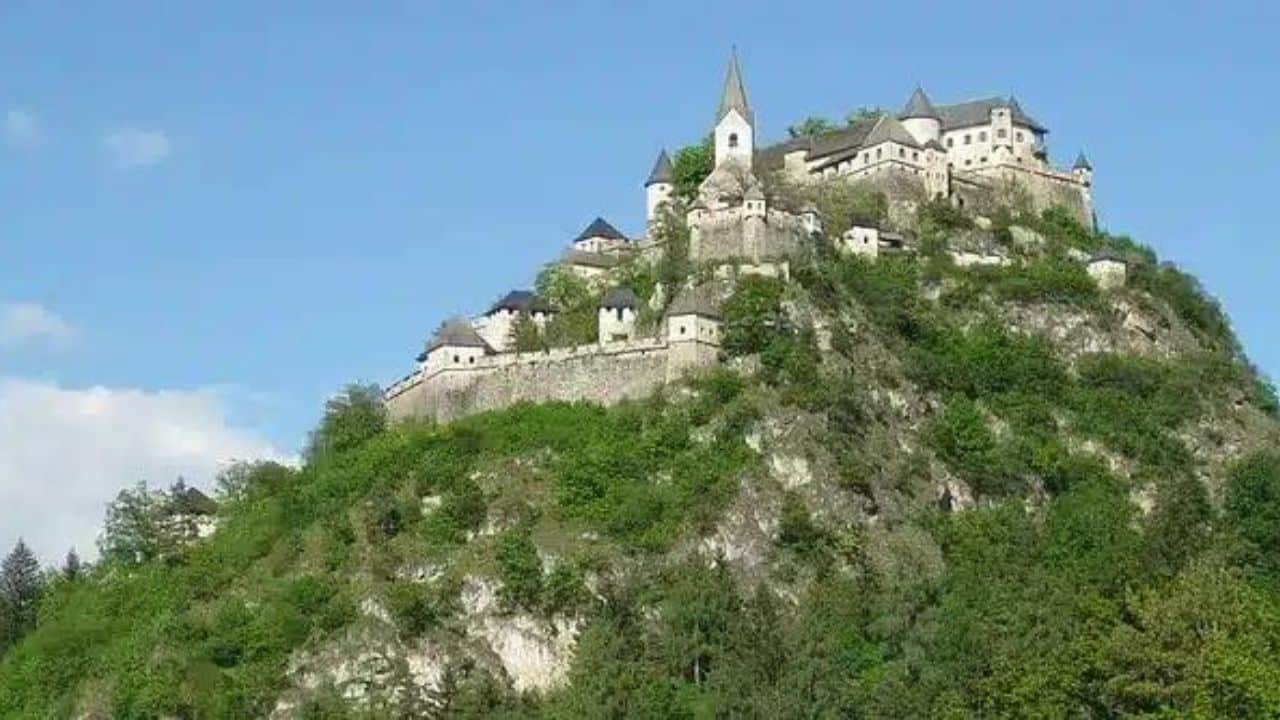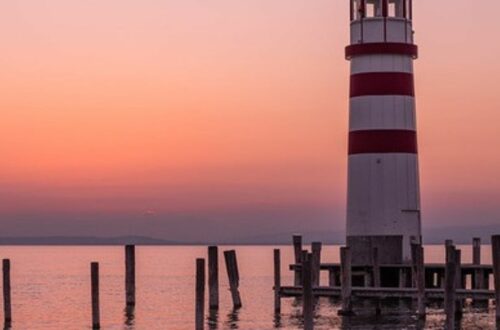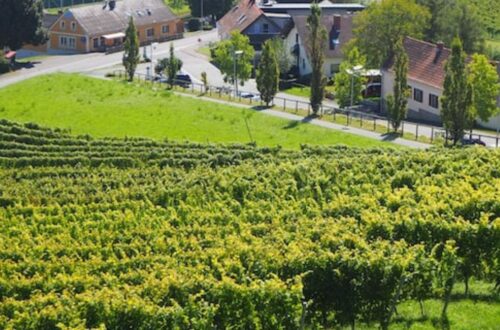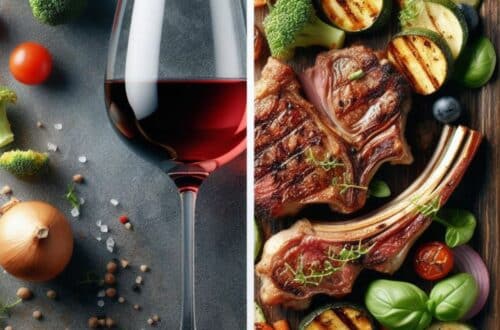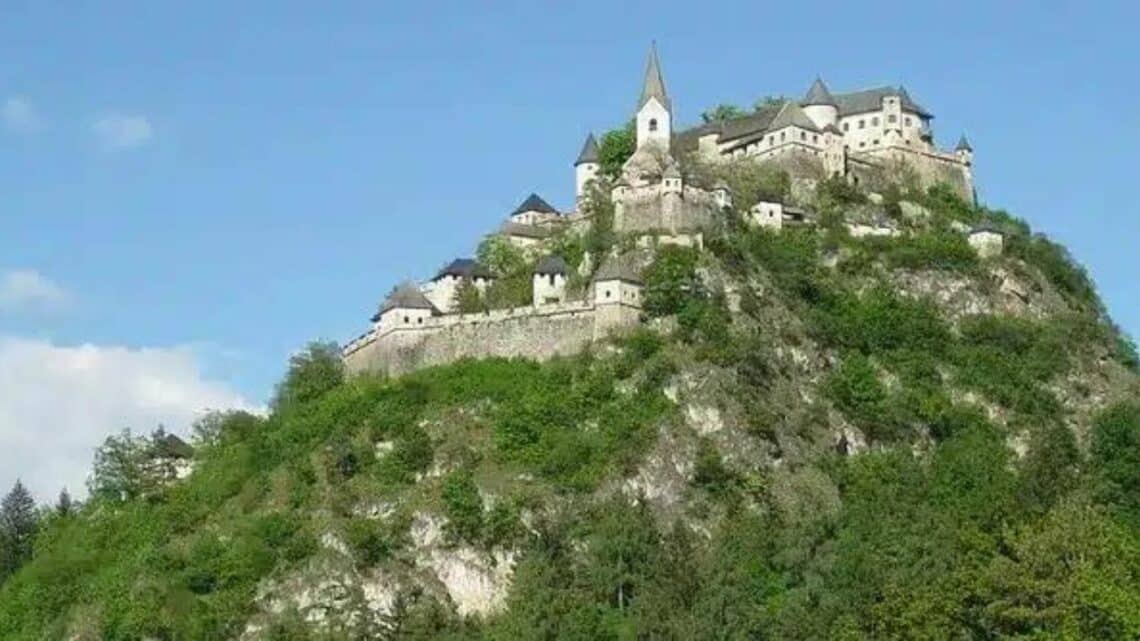
Wines in Kärnten
Nestled among the Austrian states of Upper Austria, Salzburg, Tyrol, and Vorarlberg lies the wine-growing region of Bergland, where vineyards stretch across the picturesque landscape.
Within this region, the state of Carinthia stands out as a burgeoning force in the world of wine. Designated as “Weinbaugebiet Kärnten” for quality wines, Carinthia is a relatively young but rapidly evolving winegrowing region.
History of wine in Kärnten
The wine story in Carinthia begins way back in 822, finding its roots around quaint monasteries like Millstatt, Ossiach, Gurk, St. Georgen am Längsee, Viktring, Griffen, St. Paul, and the bishop’s digs in St. Andrä and Wolfsberg.
Picture this: by the 16th century, it was a wine wonderland, boasting vine-covered expanses that stretched for hundreds of hectares.
But then, the 17th century brought its fair share of woes—beer stealing the spotlight, wars causing turmoil, taxes weighing heavily, and the unwelcome guests, phylloxera and powdery mildew.
Fast forward to the early ’90s, a wine revival kicked off in Carinthia. The heroes? The “Vinum Carinthiae” gang, formed in ’93, on a mission to bring back winegrowing as a cultural gem. In 2003, the Carinthian Wine Growers’ Association joined the party, with soil tests giving a thumbs-up for top-notch winegrowing across Carinthia.
The heart of Carinthian wine beats in spots like St. Veit, Längsee, Hochosterwitz Castle, Lavanttal, Feldkirchen, and the nooks around Klagenfurt, including the charming Seewiese am Wörthersee.
In 2005, a cool EU project led by the brainiacs at Obstbauversuchsanstalt in St. Andrä im Lavanttal figured out which grape varieties groove best in Carinthia. Come 2022, the vineyards have downsized a bit to 123 hectares, a 27% dip from the 170 hectares in 2017.
Terroir in Kärnten
Carinthia’s winegrowing landscape extends across its entirety, with a concentration in the central and eastern regions. The Lavanttal, stretching from Wolfsberg to St. Andrä and reaching St. Leonhard in the Murz valley, marks the geographical starting point.
The region’s soils exhibit remarkable diversity even within large sites.
Vineyard cultivation primarily utilizes steep terraced slopes ranging from 400 to approximately 750 meters above sea level, with a preference for southeast, south, and southwest-facing orientations. This strategic placement ensures maximum sunlight exposure, crucial for grape ripening.
The Wörthersee region, situated in southeastern Carinthia, boasts a mild and sunny climate, complementing predominantly clay-loam and loam soils. This harmonious combination nurtures the development of full-bodied, complex wines.
The area around Klagenfurt, the heart of Carinthia, provides a similar mild climate with loam, loamy sand, and gravel soils. This favorable terroir contributes to producing wines of finesse and elegance.
In the southern part of Carinthia, around Lake Millstatt, vineyards are found on terraces and foothills amidst a variety of soils ranging from loam to limestone. This diversity of terroir fosters the production of wines with distinct personalities.

The climate in Carinthia is warm and sunny, with an average annual temperature of 12°C (54°F). The region enjoys a long growing season, which allows for the development of full-bodied, complex wines.
Grape varieties in Kärnten
Approximately 80% of the vineyard areas in Carinthia are dedicated to white wine grape varieties.
The star of the show? Sauvignon Blanc takes center stage, complemented by beloved members of the Burgundy family—Chardonnay, Weißburgunder (Pinot Blanc), and Grauburgunder (Pinot Gris).
Riesling, Muskateller, and Traminer can also be found in Carinthia.
Around 20% of the vineyard areas in Carinthia are planted with red wine vines. In recent times, red wine, especially Zweigelt and Blauer Burgunder (Pinot Noir), has become very popular.
Merlot, Blauburger, St. Laurent, Blaufränkisch, Cabernet Sauvignon, and Syrah are also cultivated.
Carinthia’s higher rainfall fosters the growth of fungus-resistant grape varieties, known as PIWI.
These grape varieties are more resilient to fungal diseases, reducing the need for pesticides. In terms of white wines, Muscaris, Solaris, Souvignier Gris, Cabernet Blanc, and Sauvignac are grown.
Meanwhile, in the red wine domain, the likes of Roesler, Muscat Bleu, and others are becoming more and more popular..
Winemaking in Kärnten
White wines in Carinthia are primarily aged in stainless steel tanks, but some producers are also experimenting with aging in larger wooden barrels and amphorae.
These wines are characterized by their freshness, fruitiness, and balanced acidity, reflecting the region’s warm and sunny days and cool nights.
Red wines in Carinthia are also predominantly aged in stainless steel tanks. However, well-ripened grapes are sometimes aged in small and large wooden barrels to achieve greater depth of flavor, density, fullness, and complexity.
A small portion of red grapes is also used to produce rosé wines. These rosés are typically aged in stainless steel tanks and are known for their fruity and fresh flavors.
In recent years, some Carinthian producers have begun making skin-fermented white wines (orange wines). These wines are made by fermenting white wine grapes with their skins intact, similar to the way red wines are fermented. This process gives the wines an intense orange color and a complex flavor profile.
To complement their range of wines, some Carinthian producers also make sparkling wines, such as sparkling wine and frizzante. The traditional method of bottle fermentation is used to make Winzersekt, a prestigious sparkling wine from Carinthia.
Only occasionally, when the weather conditions in autumn are favorable, some Carinthian producers make sweet wines, known as predicate wines. These wines are made from grapes that have been allowed to fully ripen on the vine, resulting in high sugar levels and a concentrated flavor profile.
Wine associations in Kärnten
In 2003, Carinthian winegrowers established the Winegrowing Association Carinthia to serve as their collective voice and information hub. In collaboration with the Chamber of Agriculture Carinthia, the association represents the interests of Carinthian winemakers and promotes their wines.
In 2007, the Winegrowing Association formed the working group “Wine from Carinthia” to oversee marketing initiatives for Carinthian wines. After 14 years of successful promotion, the working group dissolved in 2021, and marketing and sales support now fall under the direct purview of the Winegrowing Association.
The association holds the rights to the “Wine from Carinthia” brand and the “do woxt wos” word-image mark (pure Austrian dialect which means “something grows here”)
The Winegrowing Association encompasses several member associations, each contributing to the region’s viticultural tapestry:
Vinum Carinthiae
Lavant Valley Wine Association
Association for the Promotion of Viticulture in Sittersdorf
Winegrowing Association – St. Veit/Hochosterwitz
Winegrowing Association Feldkirchen-Ossiachersee
Winegrowing Association Kanaltal
Winegrowing Association Völkermarkt-Trixnertal
Winemakers’ Community Vinum Taurisker
Wineries in Kärnten
There are roughly 87 wineries in Kärnten. Here you will find some examples:
1. Weingut Gartner (St. Andrä)
Weingut Gartner is one of the oldest and most respected wineries in Carinthia. The winery has been in operation since 1870, and it is known for its high-quality wines. The winery offers a variety of tours and tastings, as well as a restaurant and a wine shop.
2. Weingut Holzfeind (Kötschach-Mauthen)
Weingut Holzfeind is located in the Gailtal Valley, which is known for its cool climate and steep slopes. The winery specializes in producing white wines, including Sauvignon Blanc, Riesling, and Chardonnay. Weingut Holzfeind also offers a variety of tours and tastings.
3. Weingut Janko (St. Paul)
Weingut Janko is located in the Lavanttal Valley, which is known for its warm climate and fertile soils. The winery produces a wide variety of wines, including white wines, red wines, and sparkling wines. Weingut Janko also offers a variety of tours and tastings.
4. Weingut Kegley (Karnburg)
Weingut Kegley is located in the Jauntal Valley, which is known for its diverse landscape and unique terroir. The winery produces a variety of wines, including white wines, red wines, and rosé wines. Weingut Kegley also offers a variety of tours and tastings.
5. Weingut Prochazka (Feldkirchen)
Weingut Prochazka is located in the Wörthersee region, which is known for its beautiful lakes and stunning views. The winery produces a variety of wines, including white wines, red wines, and sparkling wines. Weingut Prochazka also offers a variety of tours and tastings.
6. Weingut Pulsinger (Wolfsberg)
Weingut Pulsinger is located in the Lavanttal Valley, and it is known for its award-winning wines. The winery produces a variety of wines, including white wines, red wines, and sparkling wines. Weingut Pulsinger also offers a variety of tours and tastings.
7. Weingut Serschen (Klagenfurt)
Weingut Serschen is located in the Klagenfurt basin, and it is known for its modern approach to winemaking. The winery produces a variety of wines, including white wines, red wines, and sparkling wines. Weingut Serschen also offers a variety of tours and tastings.
Let me know if you know of others you would like to share!
Wine Festivals in Kärnten

Klagenfurter Weinwoche (Klagenfurt Wine Week):This Weinfest der Regionen is a wine festival held in Klagenfurt, Austria. The dates change every year so check out this website or this one to be updated on the dates.
The festival is held on the Domplatz, the main square in Klagenfurt, and features wine from over 50 producers from Austria, Croatia, South Tyrol, and the Piedmont region of Italy.
The festival is usually open all days on weekends and afternoons on weekdays. Admission is €10 for adults, €5 for children and students, and free for children under 12.
The festival features a variety of activities, including wine tastings, live music, and food stalls. There are also a number of educational workshops and events, such as winemaking demonstrations and talks on wine pairing.
The Weinfest der Regionen is a great opportunity to sample wines from some of the best producers in Austria and the surrounding region. It is also a fun and festive event that is perfect for a summer evening.
Here are some practical and logistical information for planning your visit to the Weinfest der Regionen:
- Getting there: The Domplatz is easily accessible by public transportation. The nearest tram stop is Alter Platz, which is a short walk from the festival.
- Parking: There is limited parking available in the vicinity of the Domplatz. If you are driving, it is recommended that you park in one of the city’s many parking garages.
- Accommodation: There are a variety of hotels and guesthouses in Klagenfurt. If you are planning to attend the festival, it is recommended that you book your accommodation in advance. (The best value (price/location) being the Ibis I found).
Conclusion : Kärnten wines
The Carinthian wine industry is located in the southern part of Austria, in the region of Bergland, with key areas like Lavanttal, St. Veit, Längsee, Hochosterwitz Castle, Feldkirchen, and Klagenfurt.
Its wine journey began in 822, flourishing around monasteries and bishop seats.
The climate in Carinthia is warm and sunny, with an average temperature of 12 degrees Celsius.The soils in Carinthia are varied, ranging from loam to limestone.
80% of the grape varieties are dedicated to whites. Sauvignon Blanc steals the show, joined by Chardonnay, Weißburgunder, Grauburgunder, Riesling, Muskateller, and Traminer.
Reds cover 20%, with Zweigelt and Blauer Burgunder taking the lead, accompanied by Merlot, Blauburger, St. Laurent, Blaufränkisch, Cabernet Sauvignon, and Syrah.
PIWI grapes, resistant to fungal diseases, are on the rise.
Whites are aged in stainless steel tanks for freshness, while reds explore larger wooden barrels for depth. Rosés and orange wines add to the diversity. Sparkling wines and occasional sweet wines complete the portfolio.
In 2003, the Winegrowing Association Carinthia united vintners, collaborating with the Chamber of Agriculture. The 2007-formed “Wine from Carinthia” working group fueled marketing initiatives until 2021, now overseen directly by the association. The “Wine from Carinthia” brand and “do woxt wos” mark signify Carinthian wine quality.
Around 87 wineries thrive in Kärnten, with notable ones like Weingut Gartner, Weingut Holzfeind, Weingut Janko, Weingut Kegley, Weingut Prochazka, Weingut Pulsinger, and Weingut Serschen, each contributing to Carinthia’s vibrant viticultural scene.
Did you know about this region? Let me know in the comments!




